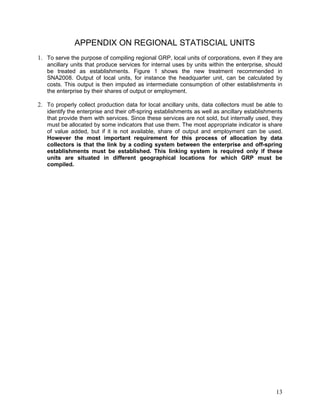This document discusses the concept of Gross Regional Product (GRP) and key issues in compiling GRP for a region.
1) GRP is conceptually equivalent to GDP but measures value created by regional production units within a regional economy, rather than domestic production units within a national economy. The production approach is the most practical method to measure GRP.
2) Main issues in compiling GRP include defining regional residents, treating ancillary units, and allocating production of multi-regional corporations.
3) For a unit to be a regional resident, it must have its center of predominant economic interest within the region's economy. Units with no ties to any region are considered supra-regional residents.













